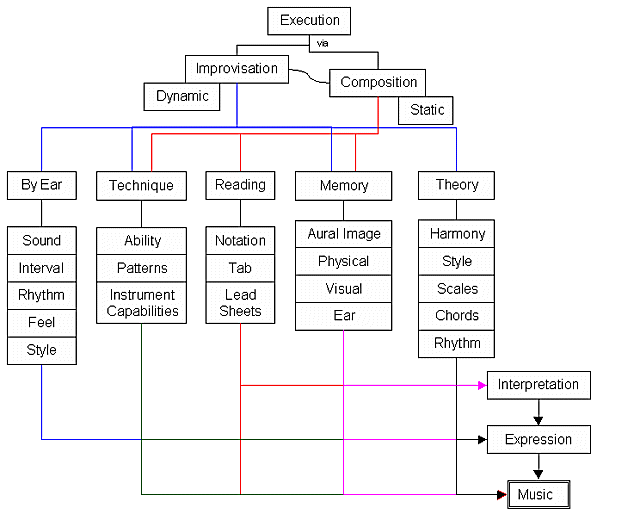
Music is played via improvisation, composition, or a combination of the two, with varying degrees of interpretation and expression. The "ways to play" can be mixed and combined in a large number of combinations. Ways to play include:
Playing strictly by improvisation (with no composed elements) eliminates reading, and certain elements of playing from memory, since strict improvisation is a purely dynamic endeavor.
The elements of interpretation and expression are final transformations of the musical elements being played that ultimately make music from sounds and silences. Playing by ear includes, by its very nature, elements of expression, but not elements of interpretation since interpretation implies variations on that which has a defined form. Composed musical elements can be interpreted, improvised ones cannot. Compositions can be interpreted well or poorly or not at all (which could be considered a (poor) type of interpretation).
Composition (distinct from playing something that has been composed) and improvisation are closely related. An instance of improvisation, captured and recorded, becomes a composition. Composition is a process of capturing improvised segments and developing them into a structurally related whole.
Improvisation commonly makes (re)use of composed elements. In fact, since musical styles include such "composed" traditional things as the 12-tone scale, micro-tonal scales, 4-4 time, and swing rhythm, virtually all improvisation makes use of some composed elements. Much (most) improvisation is melodic in nature and takes place within a composed harmony (e.g. chord progression or key) and scale type (e.g. major, minor, blues).
Both improvisation and composition are normally constrained by elements of style. These constraints do not necessarily limit creativity, but rather can require greater creativity to express within the limitations of form, structure, or tradition. Consider a poet who writes in a form as opposed to blank verse. The form is constraining, requiring greater creativity to express the same thoughts and emotions as when no form is present.